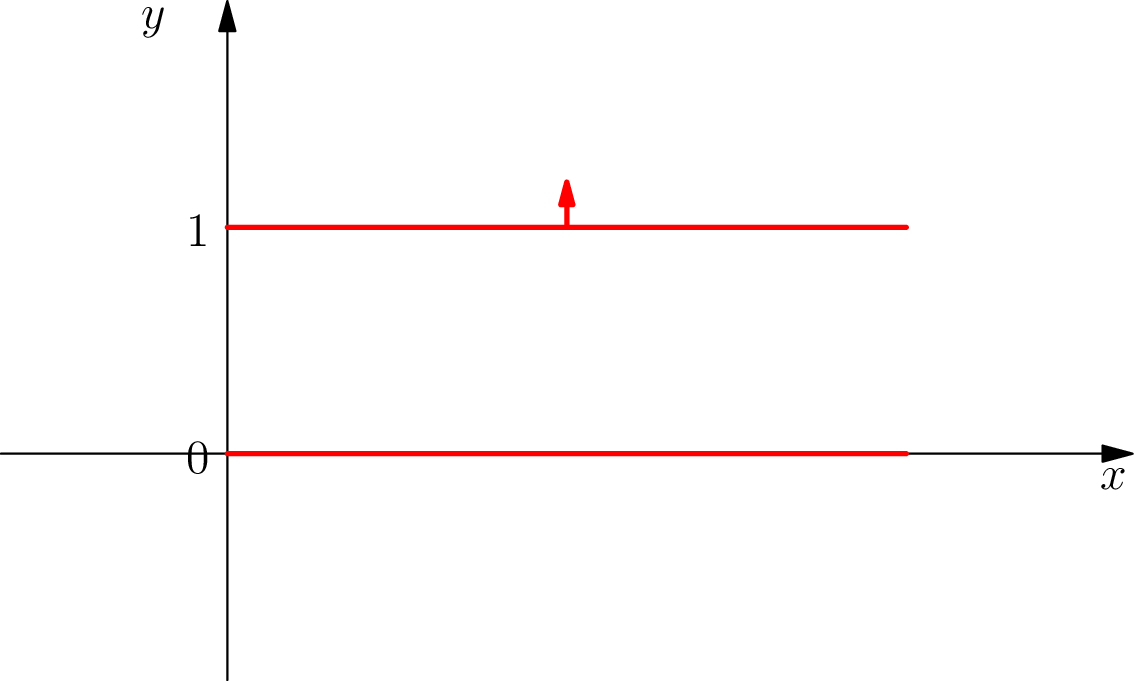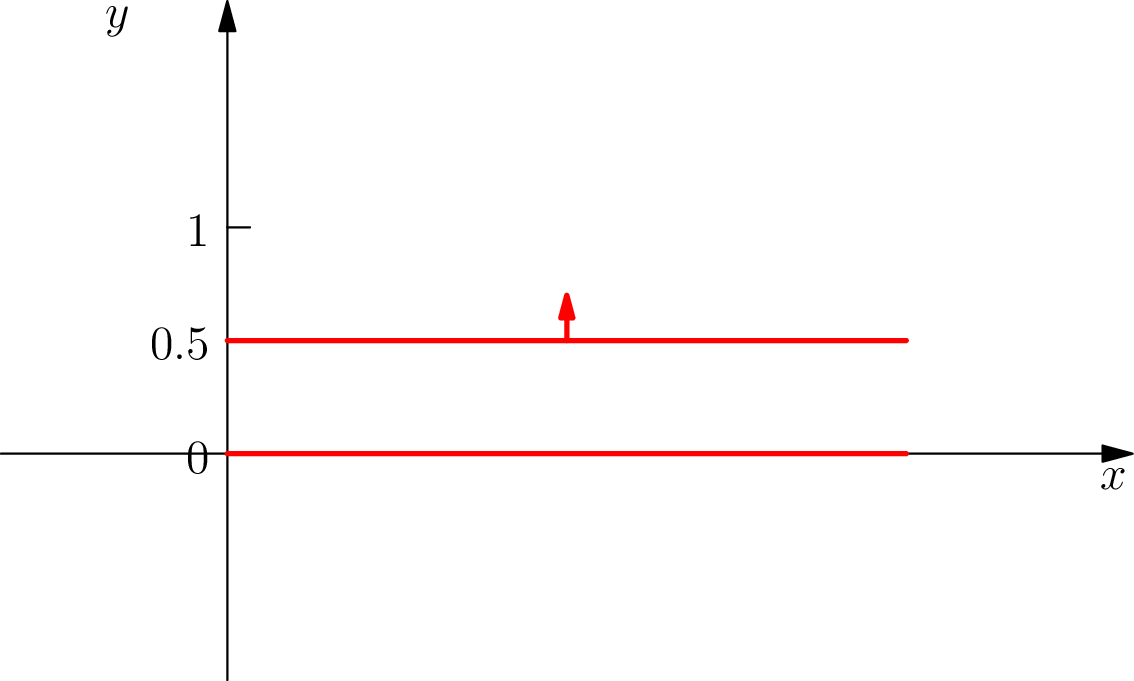The meaning of applying a covector to a vector
Let \(\alpha\) be a covector and \(u\) be a vector. The application of \(\alpha\) to \(u\), i.e. \(\alpha(u)\) can be considered as the vector \(u\) being measured by the covector \(\alpha\) via projection. If the covector \(\alpha\) does not have a unit magnitude or length, the resulted scalar value will be scaled by this magnitude.
Therefore, the covector \(\alpha\) plays the role of a ruler and its magnitude is just the reciprocal of the inter-distance between two adjacent marks on the ruler’s scale. Such inter-distance is selected as the unit for the said measurement. The smaller the unit, the larger the register of the measurement. This understanding is consistent with the illustration of covectors presented in (Burke 1985). In this book, a covector is represented as two parallel lines with an arrow. The inter-distance of the two lines is the reciprocal of the covector’s length.

The covector has a unit length.

The covector's length is 2.
References
Burke, William L. 1985. Applied Differential Geometry. 1st edition. Lanham, Md: Cambridge University Press.